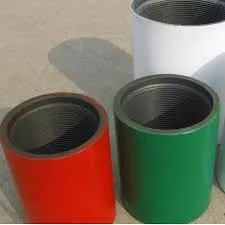- Afrikaans
- Albanian
- Amharic
- Arabic
- Armenian
- Azerbaijani
- Basque
- Belarusian
- Bengali
- Bosnian
- Bulgarian
- Catalan
- Cebuano
- Corsican
- Croatian
- Czech
- Danish
- Dutch
- English
- Esperanto
- Estonian
- Finnish
- French
- Frisian
- Galician
- Georgian
- German
- Greek
- Gujarati
- Haitian Creole
- hausa
- hawaiian
- Hebrew
- Hindi
- Miao
- Hungarian
- Icelandic
- igbo
- Indonesian
- irish
- Italian
- Japanese
- Javanese
- Kannada
- kazakh
- Khmer
- Rwandese
- Korean
- Kurdish
- Kyrgyz
- Lao
- Latin
- Latvian
- Lithuanian
- Luxembourgish
- Macedonian
- Malgashi
- Malay
- Malayalam
- Maltese
- Maori
- Marathi
- Mongolian
- Myanmar
- Nepali
- Norwegian
- Norwegian
- Occitan
- Pashto
- Persian
- Polish
- Portuguese
- Punjabi
- Romanian
- Russian
- Samoan
- Scottish Gaelic
- Serbian
- Sesotho
- Shona
- Sindhi
- Sinhala
- Slovak
- Slovenian
- Somali
- Spanish
- Sundanese
- Swahili
- Swedish
- Tagalog
- Tajik
- Tamil
- Tatar
- Telugu
- Thai
- Turkish
- Turkmen
- Ukrainian
- Urdu
- Uighur
- Uzbek
- Vietnamese
- Welsh
- Bantu
- Yiddish
- Yoruba
- Zulu
Tubing Pup Joints - High-Quality Oil and Gas Accessories
Understanding Tubing Pup Joints in Oil and Gas Operations
In the oil and gas industry, the efficiency and effectiveness of drilling operations heavily depend on the quality of the equipment used. One crucial component in this realm is the tubing pup joint. A tubing pup joint is a short length of pipe that is primarily used to connect two sections of tubing in a well. This seemingly simple device plays a pivotal role in ensuring the integrity and success of drilling and production operations.
Tubing pup joints come in various lengths and diameters, but they are typically produced to the same specifications as the main tubing to ensure compatibility and consistency. They are designed to maintain the structural integrity of the well and prevent leaks, which can lead to safety hazards and environmental concerns. The material used in manufacturing tubing pup joints is often high-strength steel, treated to withstand the extreme pressures and corrosive environments encountered in oil and gas wells.
One of the primary purposes of tubing pup joints is to accommodate changes in well conditions. As a drilling operation progresses, various factors such as temperature, pressure, and the well's geological characteristics can necessitate adjustments in the tubing configuration. Tubing pup joints provide the flexibility to modify the setup without the need to dismantle extensive sections of the existing tubing. This not only saves time but also reduces operational costs.
tubing pup joint

The installation of tubing pup joints is a straightforward process, but it requires a thorough understanding of the well's specifications. Operators must consider factors such as the depth of the well, the type of fluid being pumped, and the expected temperature and pressure conditions. Proper installation is critical; if not done correctly, it can lead to equipment failure, costly repairs, and potential hazards.
In addition to their functional utility, tubing pup joints also serve as a vital safety feature. They are integral in managing pressure surges and ensuring that the pressure within the well is kept at safe levels. The failure of a pup joint under high pressure can result in catastrophic incidents, including blowouts, which pose severe risks to personnel and the environment.
Moreover, tubing pup joints are essential in well maintenance operations. Over time, tubing can corrode or become damaged due to the harsh environments within the well. When this occurs, tubing pup joints allow for the easy replacement of defective sections without compromising the entire infrastructure, thereby enhancing the well's longevity and productivity.
In conclusion, tubing pup joints may appear to be small components in the grand scheme of oil and gas operations, but their role is none less significant. They enhance operational flexibility, ensure safety, and facilitate maintenance, all of which are vital for successful drilling and production activities. As the industry evolves and seeks greater efficiency, the importance of reliable components like tubing pup joints will only continue to grow. Understanding their function and maintenance is essential for any operator involved in oil and gas exploration and production.
-
Tubing Pup Joints: Essential Components for Oil and Gas OperationsNewsJul.10,2025
-
Pup Joints: Essential Components for Reliable Drilling OperationsNewsJul.10,2025
-
Pipe Couplings: Connecting Your World EfficientlyNewsJul.10,2025
-
Mastering Oilfield Operations with Quality Tubing and CasingNewsJul.10,2025
-
High-Quality Casing Couplings for Every NeedNewsJul.10,2025
-
Boost Your Drilling Efficiency with Premium Crossover Tools & Seating NipplesNewsJul.10,2025







